HEADSTONE EMBEDDED IN A TREE
John O'Donovan, LL.D.
Born Atatateemore, Co. Kilkenny
ix July mdcccix
died in Dublin
ix Dec. mdccclxi
by his Irish Grammar his Edition of the Annals of the Four Masters
his labours on the transcription and translation of the Brehon Laws
and his invaluable contributions to our knowledge of the topography and local history
of his country made during his connection with the Ordnance Survey
he laid a sure foundation for sound and scientific Celtic studies
and established his position as
a Master of Irish Philology and Archaeology
John was the fourth son of Edmond O'Donovan and Eleanor Hoberlin of Rochestown. His early career may have been inspired by his uncle Parick O'Donovan. He worked for antiquarian James Hardiman researching state papers and traditional sources at the Public Records Office. He also taught Irish to Thomas Larcom for a short period in 1828 and worked for Myles John O'Reilly, a collector of Irish manuscripts.
Following the death of Edward O'Reilly in August 1830, he was recruited to the Topographical Department of the first Ordnance Survey of Ireland under George Petrie in October 1830. Apart from a brief period in 1833, he worked steadily for the Survey on place-name researches until 1842, unearthing and preserving many manuscripts. After that date, O'Donovan's work with the Survey tailed off, although he was called upon from time to time to undertake place-name research on a day-to-day basis. He researched maps and manuscripts at many libraries and archives in Ireland and England, with a view to establishing the correct origin of as many of Ireland's 63,000 townland names as possible. His letters to Larcom are regarded as an important record of the ancient lore of Ireland for those counties he documented during his years of travel throughout much of Ireland.
By 1845, O'Donovan was corresponding with the younger scholar William Reeves, and much of their correspondence to 1860 survives.
O'Donovan became professor of Celtic Languages at Queen's University, and was called to the Bar in 1847. His work on linguistics was recognised in 1848 by the Royal Irish Academy, who awarded him their prestigious Cunningham Medal. On the recommendation of Grimm, he was elected a corresponding member of the Royal Academy of Prussia in 1856.
Never in great health, he died shortly after midnight on 10 December 1861 at his residence, 36 Upper Buckingham Street, Dublin. He was buried on 13 December 1861 in Glasnevin Cemetery.
He married a sister-in-law of Eugene O'Curry and was father of nine children (all but one of whom died without issue). His wife received a small state pension after his death.
Born Atatateemore, Co. Kilkenny
ix July mdcccix
died in Dublin
ix Dec. mdccclxi
by his Irish Grammar his Edition of the Annals of the Four Masters
his labours on the transcription and translation of the Brehon Laws
and his invaluable contributions to our knowledge of the topography and local history
of his country made during his connection with the Ordnance Survey
he laid a sure foundation for sound and scientific Celtic studies
and established his position as
a Master of Irish Philology and Archaeology
John was the fourth son of Edmond O'Donovan and Eleanor Hoberlin of Rochestown. His early career may have been inspired by his uncle Parick O'Donovan. He worked for antiquarian James Hardiman researching state papers and traditional sources at the Public Records Office. He also taught Irish to Thomas Larcom for a short period in 1828 and worked for Myles John O'Reilly, a collector of Irish manuscripts.
Following the death of Edward O'Reilly in August 1830, he was recruited to the Topographical Department of the first Ordnance Survey of Ireland under George Petrie in October 1830. Apart from a brief period in 1833, he worked steadily for the Survey on place-name researches until 1842, unearthing and preserving many manuscripts. After that date, O'Donovan's work with the Survey tailed off, although he was called upon from time to time to undertake place-name research on a day-to-day basis. He researched maps and manuscripts at many libraries and archives in Ireland and England, with a view to establishing the correct origin of as many of Ireland's 63,000 townland names as possible. His letters to Larcom are regarded as an important record of the ancient lore of Ireland for those counties he documented during his years of travel throughout much of Ireland.
By 1845, O'Donovan was corresponding with the younger scholar William Reeves, and much of their correspondence to 1860 survives.
O'Donovan became professor of Celtic Languages at Queen's University, and was called to the Bar in 1847. His work on linguistics was recognised in 1848 by the Royal Irish Academy, who awarded him their prestigious Cunningham Medal. On the recommendation of Grimm, he was elected a corresponding member of the Royal Academy of Prussia in 1856.
Never in great health, he died shortly after midnight on 10 December 1861 at his residence, 36 Upper Buckingham Street, Dublin. He was buried on 13 December 1861 in Glasnevin Cemetery.
He married a sister-in-law of Eugene O'Curry and was father of nine children (all but one of whom died without issue). His wife received a small state pension after his death.
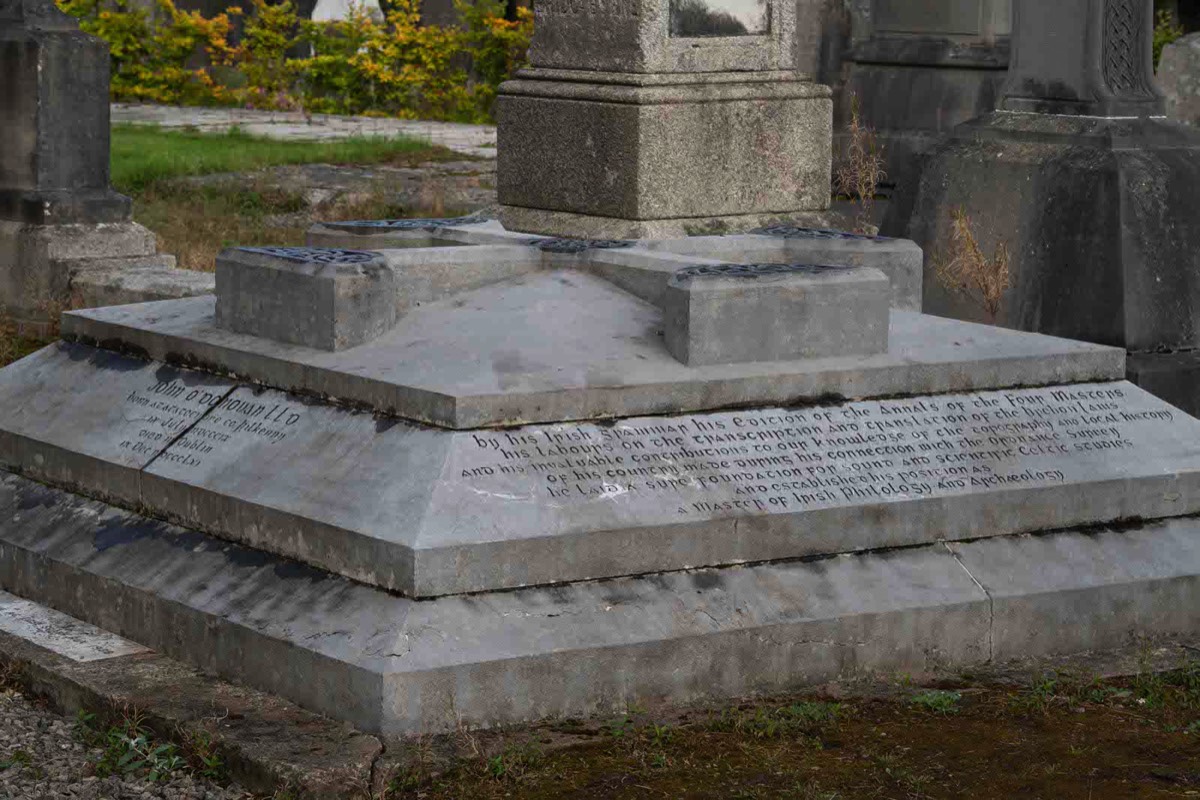
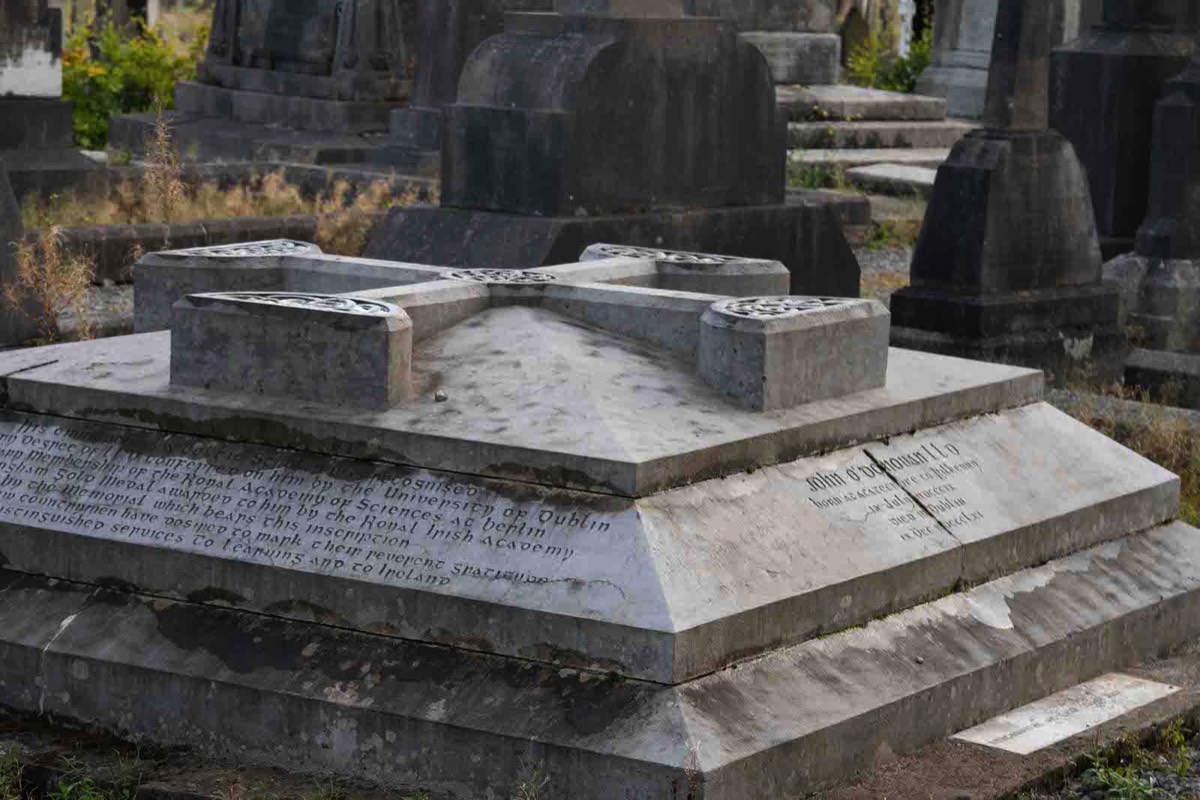
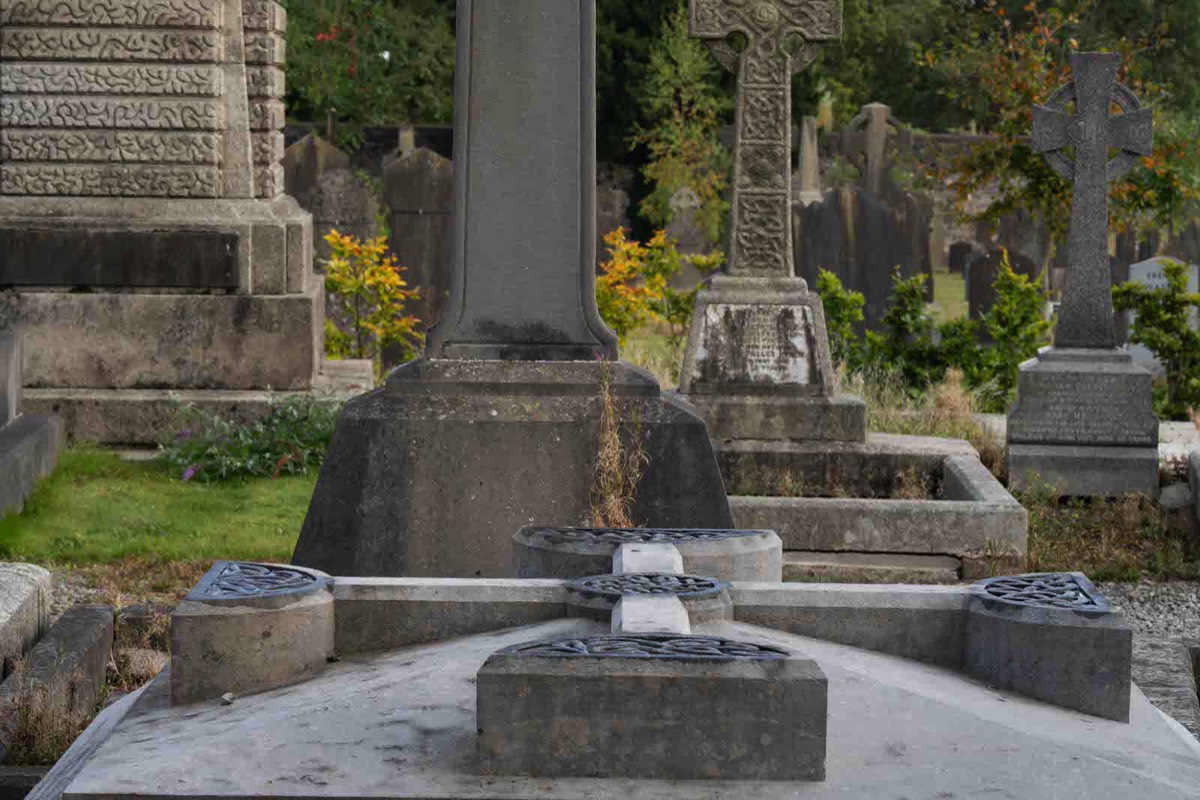
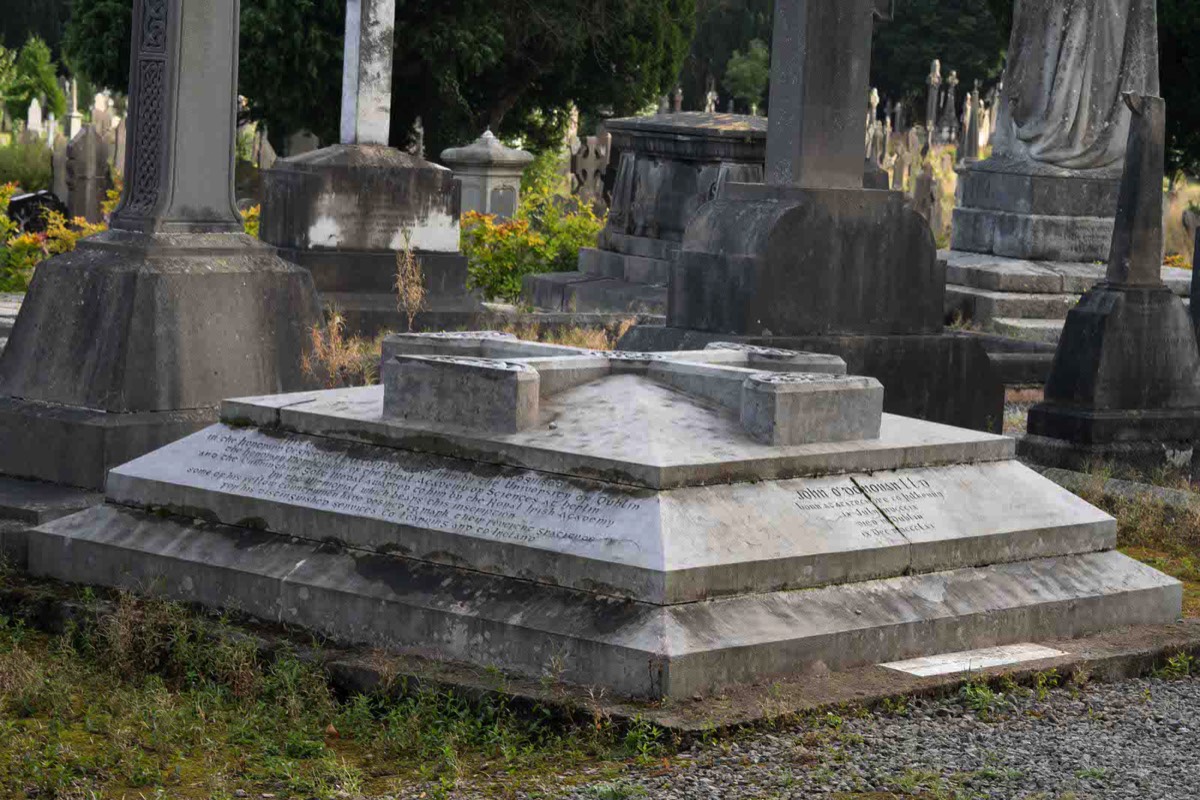
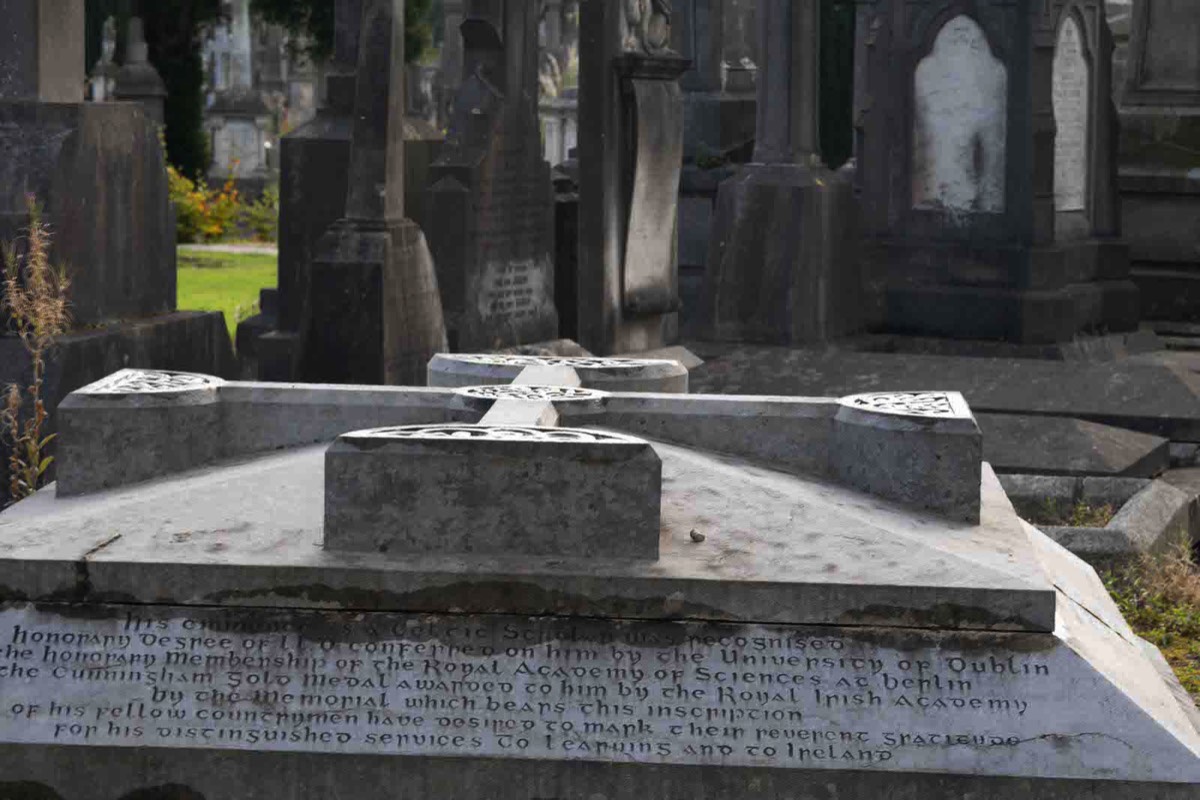
You will find links to buy products from Amazon, Google and other partners. If you click on these links, you’ll find that the URL includes a small extra piece of text which identifies that the click came from my websites. This text is an affiliate code, and it means that I get a small percentage of the money you spend if you choose to buy that product, or, in some cases, other products from the site soon after. These affiliate links help pay the costs of producing my websites and ensure that the content is free to you.
COPYRIGHT INFORMATION BELOW APPLIES ONLY TO PHOTOGRAPHS

This work by William Murphy aka Infomatique is licensed under a Creative Commons Attribution-NonCommercial-ShareAlike 4.0 International License.
Permissions beyond the scope of this license may be available at https://excellentstreetimages.com/in-the-year-twentytwenty/copyright/.
